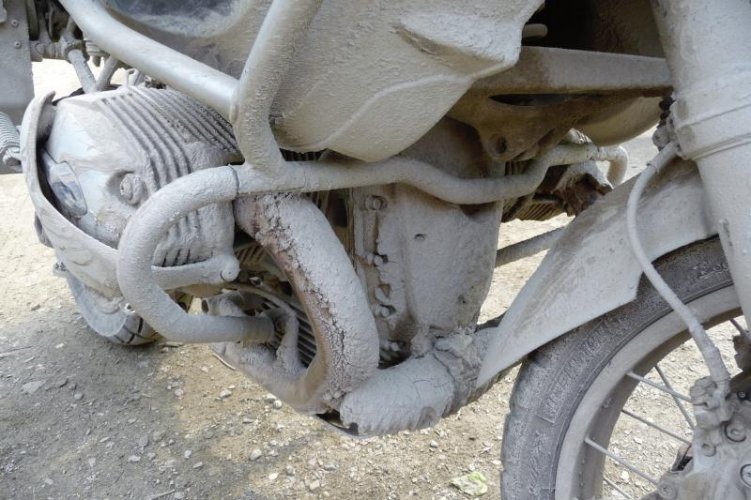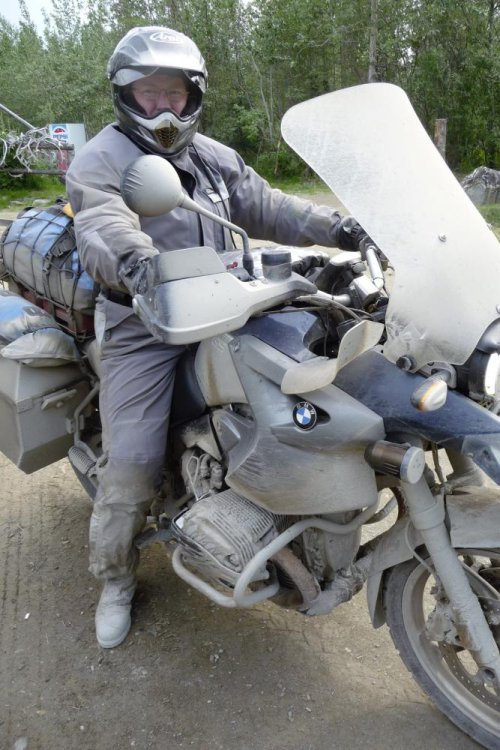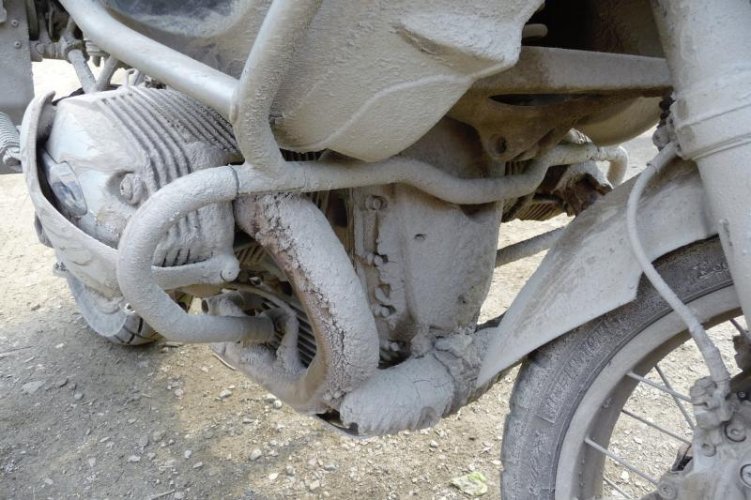jconway607
JohnWC
I was just reading the interesting article in the current MOA News about Chris Wilson riding through Alaska. It appears that just about every GS owner dreams of riding to Alaska. Fair enough. But what struck me is that Chris repeatedly talks about riding his 650GS through these Alaskan roads that are just a complete slush of dirt, grit and Calcium Chloride. It is, I gather, put on the "roads" in Alaska to firm them up (when dry). When wet, it's apparently a sloppy mess. My reading of that chemical says that :
"While these antifreeze salts are water soluble for deicing applications, the calcium and magnesium chlorides get quite viscous as water evaporates, collecting sand and dirt and form compacted deposits in recessed areas. These difficult-to-remove deposits are the source of major chloride corrosion. To complicate the situation further, if the road salts are not removed from the vehicle, MgCl2 and CaCl2 will pull moisture out of the atmosphere, rewet and continue their corrosive actions."
My question is , that by soaking every nook and cranny of the bike with this corrosive mix, aren't you inviting some serious problems down the road? Is it worth the couple of days ride to do this to your bike? That is, of course, if you plan to keep it for a while? It makes me think that if I was to ever buy a GS and the guy said " Yep, took her to Alaska two years ago," that I might well look for another bike.
"While these antifreeze salts are water soluble for deicing applications, the calcium and magnesium chlorides get quite viscous as water evaporates, collecting sand and dirt and form compacted deposits in recessed areas. These difficult-to-remove deposits are the source of major chloride corrosion. To complicate the situation further, if the road salts are not removed from the vehicle, MgCl2 and CaCl2 will pull moisture out of the atmosphere, rewet and continue their corrosive actions."
My question is , that by soaking every nook and cranny of the bike with this corrosive mix, aren't you inviting some serious problems down the road? Is it worth the couple of days ride to do this to your bike? That is, of course, if you plan to keep it for a while? It makes me think that if I was to ever buy a GS and the guy said " Yep, took her to Alaska two years ago," that I might well look for another bike.





